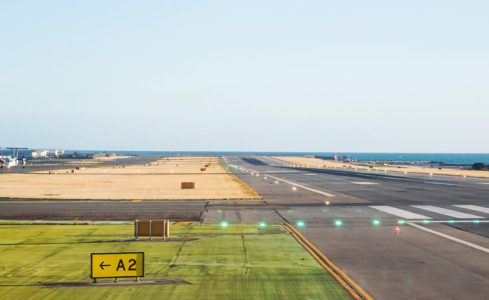How Land and Hold Short Operations Work
Land and Hold Short Operations (LAHSO) is an air traffic control procedure created to increase airport capacity without compromising aircraft safety. ATC will clear the pilot to land with a specific restriction to hold short of an intersecting runway, intersecting taxiway, or some other point identified on a runway. (The pilot can always accept or decline this clearance, based on the performance requirements of the aircraft and/or their ability as a pilot.) To make this decision, the pilot must know the available landing distance (ALD) remaining after the restriction is accounted for and then confirm that both the aircraft and the pilot are legally allowed to accept the clearance. The ALD can be found:
- Published in the special notices section of the chart supplement
- Published in the US Terminal Procedure Publications
- Verbally from ATC
LAHSO Restrictions
Many restrictions in place prevent pilots from accepting LAHSO clearance. Many are company-specific, some are federal, and some are smart piloting decisions. It is up to the pilot to know which rules apply to them, especially for the most restrictive air carrier operators; even a new student pilot must be aware of the LAHSO rules. Rule number one is that student pilots are NOT allowed to accept a clearance to land and hold short. Ever. Some other general rules worth noting are:
- Minimum distance required to conduct LAHSO is 2500 feet of the available landing distance on the hold short runway.
- Minimum weather allowed for LASHO is a 1000-foot ceiling and 3 miles visibility.
- LAHSO runway ALD must be dry.
- Tailwind component on the hold short runway must be calm (less than 3 knots).
- There can be no reported windshear in the area.
- Night LAHSO must be to a runway with a VASI or PAPI.
- An announcement regarding LAHSO must be made on the ATIS, or if the ATIS is not available, then the pilot must be notified upon initial contact.
Pilot Considerations Before Accepting Clearance
The time to prepare for LAHSO clearance is well before you are handed off to the tower, just miles from the airport. The pilot has many factors to consider before saying “yes” to the clearance. If possible, the planning process should begin on the ground before the pilot departs for the trip, giving them enough time to do the calculations required to determine landing length availability. Some other things to consider are:
- Weather conditions at the landing airport, including tailwinds and wet runways.
- Landing performance, including any inoperative equipment that might affect landing distances.
- Personal competence, fatigue, and well-being during the flight.
- Familiarity with LAHSO procedures.
- Rejected landing considerations, specifically to avoid the other aircraft involved in your land and hold short clearance.
LAHSO Situational Awareness
Having an airport diagram available to the pilot is critical for a successful LAHSO clearance and is the best way for the pilot to know where the hold short restriction is in relation to the landing runway. It is also mandatory for the pilot to read back all LAHSO clearances, including the hold short point. Once the clearance is accepted to hold short of a specified point, the pilot must adhere to that restriction, unless an emergency occurs, or ATC gives an amended clearance. The LAHSO clearance is beneficial to maintaining a steady traffic flow and works well when both pilots and controllers follow the rules. Advanced planning can help ensure safe and efficient airport operation, even at the busiest airports.
RELATED CTS TRAINING
RELATED CTS TRAINING










